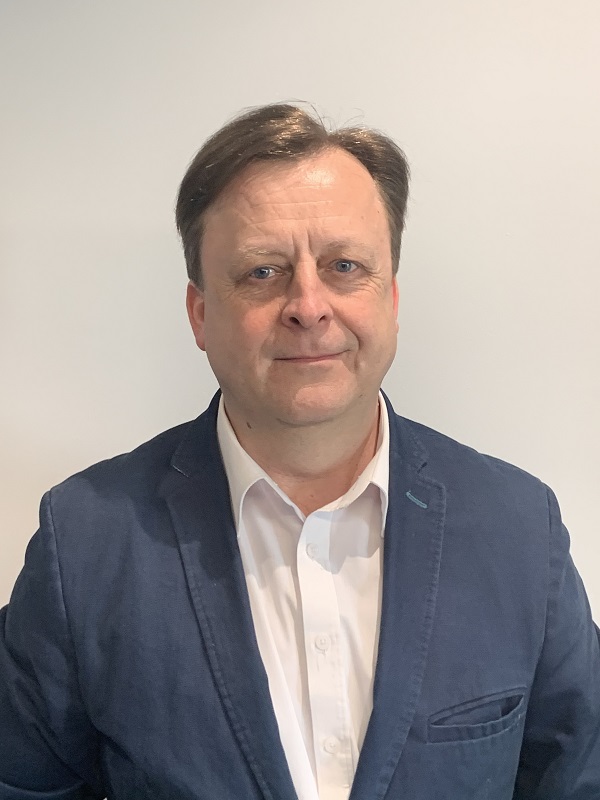During the implementation of the SAP S/4HANA transaction system in Sokpol-Koncentraty, which took place in July 2020, a lot of attention was paid to improving the quality of processes of raw material purchasing and contractor billing. The aim of another large project was to cover another important link in the supply chain – warehouse management – with a modern cloud solution. The implementation partner in this project was All for One Poland (formerly SNP Poland).
In the first stage, the SAP EWM system covered the goods receipt into the finished and semi-finished products warehouse, inventory management at the finished product level, and sales to the customer. The plans also include the launch of the SAP Extended Warehouse Management functionality for the raw material and packaging warehouse and for production supply. At present, these processes are executed using transactions (the so-called Z extensions) prepared by the All for One consultants according to the specification of the customer’s expectations.
Goods receipt into the warehouse of production-related materials and parts of raw materials
The process of goods receipt into the warehouse of production-related materials and parts of raw materials is carried out using the Inventory Management functionality (part of the S/4HANA inventory management solutions) and a transaction for printing labels for finished goods originally prepared in the S/4 implementation project, and now extended and modified for the needs of warehouse processes.
A system-generated label in the GS1 standard is attached to goods received from suppliers at the Inventory Management level in S/4HANA. The SSCC number (Serial Shipping Container Code) from the label is used to create a handling unit with that number in the warehouse.
In a dedicated terminal transaction, after scanning from the label a barcode with the AI identification (application identifier) appropriate for e.g. EAN of the material, batch number, material quantity, the system automatically generates a material movement between the storage location managed in S/4 and the storage location managed in EWM. In addition, a warehouse task is created in the background, in which a specific storage bin for the material is indicated based on the warehouse putaway strategy. The operator takes the handling unit to the specified address and confirms the operation.
In this way, some raw materials, production-related materials and semi-finished products (concentrates, purées) are received into the EWM structures.
Issue to production
The next step is to move the materials from the storage locations managed in EWM to the near-production storage locations managed in S/4HANA. The customer’s objective was to make the issue of materials to production as easy as possible for the operators and to use the already existing SSCC labels in this operation.
Due to the characteristics of its business operations, Sokpol-Koncentraty does not yet use a production planning solution with storage locations managed in EWM and does not create extensive production supply schedules. This process was organized using reverse posting – that is from EWM structures to S/4.
The operator in a terminal transaction checks the address where the material to be issued to production is located. Then, after confirming the storage bin from which the material is taken and the material quantity to be issued to production, including the validation of the handling unit number, the material is moved to the near-production storage location that is in the structure in S4H. The system generates an appropriate transfer posting document in the background as well as creates and confirms the relevant warehouse tasks.
EWM – receipt of finished and semi-finished products
The finished and semi-finished products warehouse is already managed in the SAP EWM solution, with some modifications.
Materials are received from production using printed labels in the SSCC standard. The labels are affixed to carriers with materials which are to be received from production into the warehouse. The following types of load carriers are used: Euro pallets, half pallets (DHP), plastic crates for tubes with fruit mousse, barrels for concentrates and many other. The choice of a carrier for the material can be based on the customer’s order specification and the material characteristics themselves. In addition to the standard data, the label additionally contains the production order number, which is used to receive the production into the warehouse.
When the material is delivered to the intermediate storage place in the warehouse, the warehouse operator in a dedicated terminal transaction scans the production order number from the label (the production order number in reference to which the production yield will be made) and the code with the SSCC number and quantity. Based on this data, an internal inbound delivery to the warehouse is created and a handling unit is generated and packaged in the delivery with the SSCC number from the label. Additionally, in the transaction, the operator is able to change the carrier for the material because the original carrier type data is retrieved from the material master data.
Making it clear what type of carrier the material is on is important because the vast majority of the Sokpol-Koncentraty warehouse is made of block structures with storage capacities dependent on the type of carrier that will be stored. After the delivery is posted, the system generates a warehouse order for placing the material, a handling unit, in a specific storage bin. The storage bin is selected by the system based on the material putaway strategy included in the material master data. The final step is to confirm the placement of the material in the storage bin by scanning the storage bin where the material is placed. Also on the S/4 side, the production order for the material quantity received into the warehouse is updated automatically.
Block and rack structures
At the time when the concept of SAP EWM implementation was created, almost 95% of the warehouse were block structures. However, at the same time, a new rack warehouse was built in the company. Therefore, the project included also the preparation of strategies for the high rack warehouse, including the logic and constraints of using multiple carrier types for materials (e.g. Euro pallets stored only in the lower part of the racks, plastic containers in the upper racks).
The solution was tested as part of the project (although the warehouse had not been physically built yet). Following the go-live of the system, new additional storage bins for rack structures were set up, and automatically the materials that had in their master data warehouse putaway strategies taking into account rack structures, were first put into the warehouse of “rack” type.

Sławomir Malarczyk, Chief Operating Officer, Sokpol-Koncentraty
SAP EWM – an indispensable step in business development
The choice of SAP EWM was a deliberate and planned action postponed from the implementation of SAP S/4 HANA to give users the opportunity to learn about the MM module, its functions and limitations. As a result, the EWM conceptualization process as well as the awareness of needs when discussing possibilities and principles offered by SAP EWM were more informed and factual. This allowed for a soft transition from the MM module of the S/4 system to SAP EWM and focusing on gaining knowledge on and handling new terminal transactions, which had not been used by Sokpol-Koncentraty until then.
As in the case of selecting All for One (SNP Poland), we decided to choose the EWM module from SAP because despite the existence of many similar WMS systems on the market, we wanted to avoid the risk of inter-module incompatibility. Moreover, the implementation of systems from different manufacturers and by different providers lengthens the project duration and generates additional costs. We managed to avoid this.
The implementation of a modern warehouse system was an indispensable step in the company’s development due to the increasing share of retail production and a tendency to shorten the product life cycle on the market. Therefore, it becomes important to track not only the batch but also the pallet unit, which is enabled by the SAP EWM system, while the MM S/4HANA module does not provide such functionality. It can be said that EWM leads the warehouse operator by the hand, which means that they don’t have to break the established FIFO or FEFO rules when it is not possible to locate batches in the MM module, where in principle the warehouses function as open warehouses and the search for batches was based on expert knowledge.
Sławomir Malarczyk, Chief Operating Officer, Sokpol-Koncentraty
Issue to the customer
In the process of issuing goods to the customer, Sokpol-Koncentraty uses standard SAP EWM functionalities. Sales orders created in S/4HANA and outbound deliveries to the customer are then replicated to EWM. Next, warehouse tasks (issues) are generated for outbound deliveries according to the strategy. Warehouse tasks are simultaneously attached to the so-called warehouse orders.
Operators in the warehouse perform load picking based on queues for issues or directly pick warehouse orders for fulfillment. The person who manages loading for customers (e.g. a shift manager) sends information about the warehouse task to be performed to the operator’s terminal. In addition, the operator is linked with the equipment (resource) they are currently using, i.e. a truck with specific loading parameters. The warehouse order contains specific information about the sequence of operations, addresses of storage bins from which handling units are to be picked for loading, and the intermediate storage place to which they are to be transported before the physical loading of materials onto the transport units. Individual operations are confirmed in a dedicated manner, e.g. by scanning the address of the storage bin or the number of the handling unit, or other.
A completed delivery is posted in accordance with the SAP EWM standard. Then the information is sent to the S/4 sales module at the Inventory Management level where it receives the posted status. In the next step, an invoice is generated and shipping documents are printed.
In a similar way – also in accordance with the SAP EWM standard – incomplete deliveries are handled if there are no suitable goods in stock.
After the completion of loading is confirmed, the issue of the actual quantity of goods is posted.
Outcome and stocking up
The implemented system was launched a week before the official go-live in order to stock up the warehouse. The above-described transaction for printing labels was used for stocking up. For the purposes of this process, its logic was slightly modified because the goods were physically already present in the warehouse. During the transfer posting of stock levels from Inventory Management in S/4 to SAP EWM structures and creation of handling units, an internal delivery was performed with confirmation of the storage bin.
The first pallet from production to SAP EWM was received on June 14, 2021 – which can be considered the official go-live of the system. All operations for the finished goods warehouse (including transfers, consolidations, physical inventory) are performed using standard SAP EWM transactions for all goods stored in the system structures (finished products, semi-finished products).
Private cloud for SAP
At present, the support for the SAP EWM solution in Sokpol-Koncentraty is provided by the All for One application management consultants, who help users solve day-to-day operation problems, answer questions, and carry out minor development work related to system tuning. The company also uses SAP application management services for S/4, as well as other managed services for SAP in All for One (SAP Managed Services), including SAP administration and private cloud services (All for One Managed Cloud).
Sokpol-Koncentraty is a manufacturer of fruit and vegetable juices, concentrates, purées and flavors from fruit and vegetables. The company’s headquarters is located in Zagłoba near Kazimierz Dolny. The modern production plant provides highly developed technological facilities consisting of the state-of-the-art production lines and technological machines and equipment. The company processes approximately 70 thousand tons of fruit annually, mainly apples, producing ca. 15 thousand tons of fruit concentrates, 5 thousand tons of purées and 10 thousand tons of NFC juice. It has customers in Poland, Germany, Austria, England, Russia, Czech Republic, the Netherlands, Estonia, Switzerland, Norway, Slovakia, Sweden and other countries.


